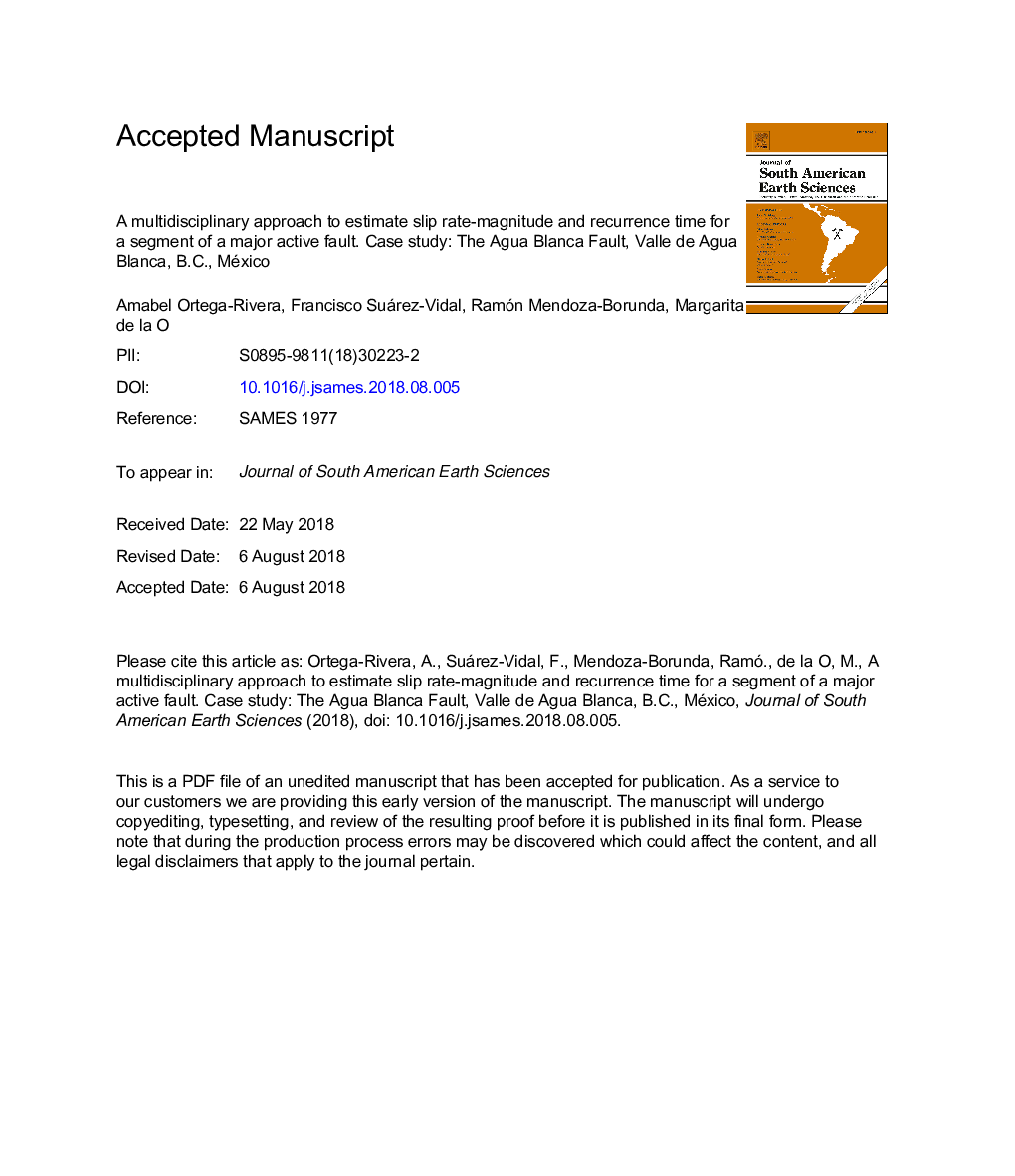| Article ID | Journal | Published Year | Pages | File Type |
|---|---|---|---|---|
| 8907554 | Journal of South American Earth Sciences | 2018 | 46 Pages |
Abstract
The segmented major Agua Blanca Fault is one of the largest geologically active faults in northern Baja California, México. It extends 130â¯km inland, from the Pacific Ocean to the San MatÃas Pass (near the Gulf of California). Geologic evidence shows that the Agua Blanca Fault has been active during most of the Quaternary. To estimate the seismic hazard that the Agua Blanca Fault represents for the region, it is necessary to recognize its seismic activity. However, seismic data and historical registries of major seismic events associated to this fault are limited. In addition, structural evidence required to calculate the slip rates is scarce. Thus, in order to determine fault movements and hence its seismic risk, it was necessary to use other geological techniques. For that reason, a different multidisciplinary approach to estimate slip rates, magnitude and recurrence times for a geologically active major fault was tested in a selected segment of the Major Agua Blanca Fault (study area: Valle de Agua Blanca, locality: Rancho La Cocina-Rancho Agua Blanca). In this case, correlation of the major alluvial fans displaced by the fault by the use of the clast counting technique and other geological data was used in order to estimate slip rates, magnitude and recurrence times for the Valle de Agua Blanca segment of the fault. By using this method, two major distinctive ancient fans and four small recent fans dissected and offset by the fault within the Valle de Agua Blanca were identified. Fault displacement was established, and the slip rate was calculated to be â¼6â¯mm/yr consistent with the amount obtained in other studies within the area by the use of other techniques. The average length of each segment of the Agua Blanca Fault is between 20 and 30â¯km, a surface rupture of 20-30â¯km accompanies earthquakes of Ms 6.7-7.0. This is the case in the Valle Agua Blanca, which is the boundary between two major eastern fault segments 20-35â¯km long. These lengths, and the slip rate obtained, and using the Bonilla et al., (1984) regression relationship developed for worldwide strike-slip faults, we can estimate the recurrence interval for earthquakes with magnitudes between 6 and 7. The recurrence interval for earthquakes with Msâ¯=â¯6 to 7 generated by the Agua Blanca Fault in the Valle Agua Blanca is between 75 and 200â¯yr, with average ground displacements of 0.5-1.25â¯m.
Related Topics
Physical Sciences and Engineering
Earth and Planetary Sciences
Earth and Planetary Sciences (General)
Authors
Amabel Ortega-Rivera, Francisco Suárez-Vidal, Ramón Mendoza-Borunda, Margarita de la O,
